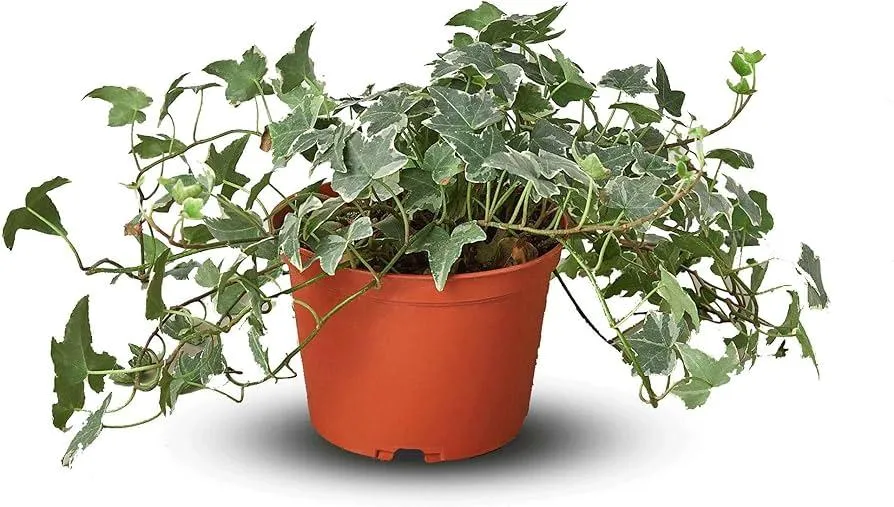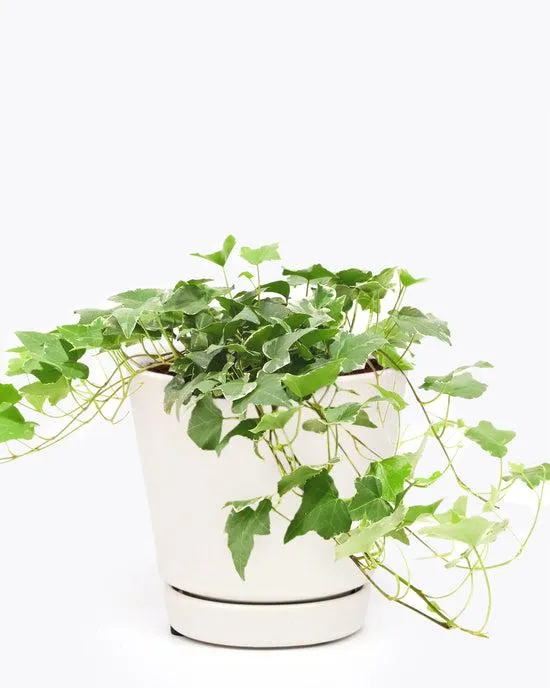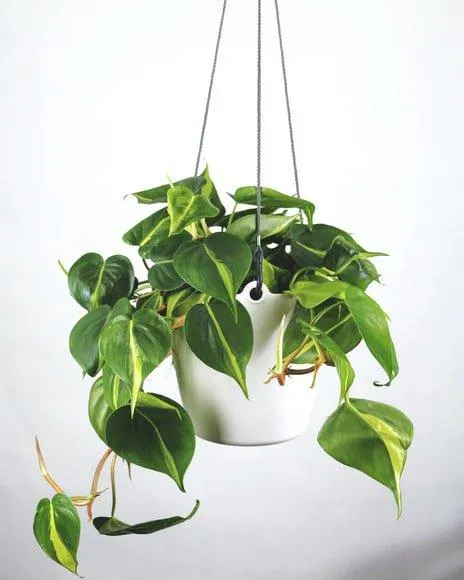Are Ivy Plants a Good Choice for Indoor Spaces?
If you’re looking to add some greenery to your home but aren’t sure where to start, ivy plants may be an excellent option worth considering. As one of the most popular houseplants, ivy comes in many varieties suitable for indoor conditions. But are ivy plants actually good for inside your home? Let’s take a closer look.
Ivy Varieties for Indoors
- English Ivy (Hedera helix) – One of the hardiest ivies, English ivy thrives in low to medium light. It has thick evergreen leaves and tolerates a wide range of temperatures.
- Swedish Ivy (Plectranthus verticillatus) – This vining plant has fuzzy green leaves and prefers bright indirect light. It’s relatively low maintenance.
- Needlepoint Ivy (Hedera helix ‘Needlepoint’) – Known for its small, textured leaves, this ivy variety spreads out rather than vines upward. It spreads slowly indoors.
- Irish Ivy (Hedera hibernica) – Similar to English ivy but with smaller leaves, Irish ivy isperfect for trailing over shelves and house walls. It must have good drainage.
These are just a sampling of common ivy varieties suitable for indoor conditions. When choosing an ivy for your home, consider the available light levels as well as your preference for vine-like growth or a more spreading habit.
Benefits of Keeping Ivy Indoors
There are several key benefits to using ivy plants indoors:
Air Purification – Ivy is excellent at absorbing toxins like formaldehyde, benzene, and trichloroethylene from the air. In my experience, English ivy and Swedish ivy are especially good at this. Keeping ivy plants in your home can significantly improve indoor air quality.
Low Maintenance – Most ivy varieties are quite resilient and adapt well to indoor conditions. Once established, ivy needs only occasional watering and does not demand much sunlight. This makes them almost carefree to have inside.
Attractive Foliage – With their lush leaves and ability to climb structures, ivy plants add visual interest indoors. Their foliage comes in various shades of green and some cultivars even have purple or silver variegation. Ivy is a nice way to bring the outdoors in through decorative foliage.
Suitable for All Spaces – Because they take up little floor space but fill walls and other vertical surfaces, ivy plants work well anywhere from small apartments to larger homes. You can display them on shelving, hanging planters, or décor poles.
As you can see, ivy brings many benefits when used for indoor landscaping. Their graceful vines and ability to thrive with neglect make them an outstanding choice.
Tips for Growing Ivy Indoors
While hardy, growing ivy successfully indoors does require some care. Here are some tips based on my experience over the years:

Lighting – Most ivy varieties prefer low to medium, indirect sunlight. Locate them near an east or west-facing window to filter sunlight. Avoid direct sun, which can scorch leaves.
Temperature – Keep ivy between 60-80°F for optimal growth. Drafty areas or near heat vents may be too warm/cold. Monitor conditions, especially in winter.
Soil – Use a well-draining potting mix. Ivy hates soggy roots and may develop root rot if the soil stays wet for too long. Allow the top inch to dry before watering.
Fertilizer – Feed monthly in spring and summer with a diluted liquid houseplant fertilizer. Ivy grows slowly indoors and doesn’t need heavy nutrients.
Humidity – While not mandatory, ivy benefits from moderate humidity levels around 50%. Use a pebble tray or consider a humidifier.
Pruning – Trim off leggy or spindly growth to keep ivy bushy. Remove any diseased or damaged foliage. Prune congested stems for increased airflow circulation.
By meeting these basic care requirements, you can have thriving ivy indoors for many months or even years of enjoyment. Proper maintenance leads to luxurious foliage.
Potential Issues with Indoor Ivy
Of course, growing any plant indoors does carry some risks. A few potential issues to look out for with ivy include:
– Pests like spider mites or mealybugs may infest plants under certain conditions, like low humidity or overwatered soil. Regular inspections help catch problems early.

– Lack of sunlight can cause leaves to yellow or drop. Place ivy in a bright spot and gradually acclimate it if moving from low to high light.
– Overwatering is a common mistake, leading to root rot. Allow soil to partially dry between waterings, especially in winter when ivy grows slowly.
– Poisoning risk if ingested, since all parts of ivy are technically toxic. Not an issue if using ivy décor indoors safely out of children’s and pets’ reach.
For the most part, ivy tolerates indoor stresses very well. But being observant helps avoid pest/disease problems down the road. With some basic awareness of these risks, ivy still makes a great choice for indoor plants.
Personal Experience with Indoor Ivy
From my experience keeping multiple plants over the years, English ivy has basically been foolproof for indoor conditions. I’ve had one specimen trailing elegantly up a bookshelf for going on five years now with only occasional watering and no special care. It’s thrived in low to medium lighting and normal household temperatures.
I’ve also had great success with Swedish ivy in the office. Despite very low humidity, it has flourished trailing out of hanging baskets into lush dense vines. And unlike English ivy, it hasn’t becomeleggy or sparse like some of my other indoor plants have over time in the office setting.
The only issues I’ve faced have been occasional spider mites during particularly dry winters indoors. A thorough soap flush and increasing humidity resolved the problems quickly before they spread to other plants.
Overall, ivy has proven to be kind of the “golden child” out of all my indoor greenery throughout the seasons and locations. It’s basically foolproof, looks amazing, and improves air quality – does this plant get any better for indoor use? Based on personal experience, I’d say ivy is a basically solid choice.
Most Frequently Asked Questions
Do ivy plants require direct sunlight?
No, most ivy varieties prefer low to medium, indirect sunlight. Too much direct sun may scorch their leaves. East or west-facing windows provide the best filtered light.

How often should ivy be watered indoors?
It depends on conditions, but allowing the top inch of soil to dry partially between waterings is a good rule of thumb. Water less in winter when growth is slower.
Does ivy need fertilizer inside?
Ivy growing indoors benefits from monthly feeding March-September with a diluted liquid houseplant fertilizer. It supports healthier foliage but overfertilizing can harm plants.
Will ivy climb walls and furniture indoors?
Yes, given the opportunity many ivy varieties will naturally attach themselves and climb vertically. Use this tendency decoratively by letting ivy cascade up poles or spiral out of hanging containers.
How do I repot an overgrown ivy plant?
Gently remove the plant from its current pot. Tease apart the root ball androots if crowded. Repot into a slightly larger container using freshpotting mix. Prune off any damaged sections of stem or leaves at this time.
In conclusion, ivy plants are certainly a good choice for adding greenery indoors. Their attractive foliage, easy care requirements, air-purifying benefits and versatility make ivy a top pick for interior landscaping. With proper conditions, ivy thrives inside for years of natural décor.
Is Ivy a Good Indoor Plant?
| Plant | Water Needs | Light Needs | Humidity Needs | Care Level |
|---|---|---|---|---|
| English Ivy | Allow soil to dry out between waterings | Low to medium light | Prefers humid conditions | Low maintenance |
| Swedish Ivy | Water when top inch of soil is dry | Medium to bright light | Tolerates low humidity | Low maintenance |
| Needlepoint Ivy | Water when top inch of soil is dry | Medium light | Tolerates low humidity | Low maintenance |
| Cast Iron Plant | Allow soil to dry slightly between waterings | Low to medium light | Tolerates low humidity | Very low maintenance |
FAQ
-
Are ivy plants good for indoor use?
Basically, ivy plants can make awesome houseplants. They don’t need much sunlight and don’t mind low lighting. At the same time, they add some nice green color to a room. Some varieties also have interesting shaped or patterned leaves. On the other hand, they can grow pretty fast so you have to keep them pruned or they’ll get out of control.
-
Do ivy plants need lots of sunlight?
Kinda not really. Ivy is one of those plants that can tolerate low light conditions. They won’t grow super fast without much sun but they will survive. Sort of like my cousin’s plant – it was in her basement for years under one fluorescent light bulb! She basically forgot about it but it just kept hanging on. Anyway, an east or west window should provide enough sunlight for an ivy. Too much direct sun may actually scorch their leaves.
-
How often do you need to water an ivy plant?
It depends on your home and the environment. As a general rule, check the soil regularly and water when the top inch or two starts to feel dry. Kind of like waiting until your houseplant is thirsty. During warmer months when sunlight is stronger, you may need to water every 5-7 days. In winter, cut back to every couple of weeks. The soil shouldn’t be soggy or sitting in water though. Funny how such an adaptable plant like ivy still needs TLC!
-
Do ivy plants need fertilizer?
Using a dilute liquid houseplant fertilizer during the spring and summer growing seasons is a good idea. It’ll keep an ivy looking its best. But some people claim their ivy thrived for years with no fertilizer at all! Honestly the plant stores always try to upsell me fertilizer but my Ivy looks “fertilizer-ly” great so who knows. Maybe an Ivy just doesn’t need extra nutrients. Like my grandma – that woman ate leftovers every night and lived to 90. Go figure!

-
Can ivy plants be grown from cuttings?
Yes absolutely! Ivy is super easy to propagate from cuttings. Just snip off a 4-6 inch Shoot with a few leaves and remove the bottom leaves. Stick the cutting in soil, keep the soil moist, and within a few weeks you’ll see roots starting to form. Before you know it you’ve got a whole new ivy plant! Might as well grab some friends and cocktail hour turns into ivy propagation hour. Then you’re set with plant swag for life, or at least a few houseplants anyway.
-
What kinds of ivy plants are good for indoors?
English ivy and Swedish ivy, often sold as “pot ivy” or “devils ivy”, are super popular indoor varieties. Their darker green leaves and trailing vines look amazing dangling over a pot or bookcase. Tiger swallowtail ivy has beautiful variegated leaves striped in cream and green. For something really dramatic, try laceleaf English ivy with deeply cut, delicate foliage. Another stunner: needlepoint ivy’s tiny roundish green leaves edged in white. Basically any ivy can work indoors as long as you give it the light and care it needs.
-
Are ivy plants toxic for pets?
Unfortunately ivy plants can be unsafe for cats and dogs since many varieties contain calcium oxalate crystals that can irritate their mouths and stomachs. Symptoms of poisoning include drooling, vomiting, and gum inflammation. But my friend’s dog Spike ate an entire ivy plant once and was totally fine! I guess it depends on the individual pet. So if fido or fluffy are chowing down on your plants, maybe best to find them a stray leaf or vine to chew instead. Their safety has to come before a nice decoration, right?
